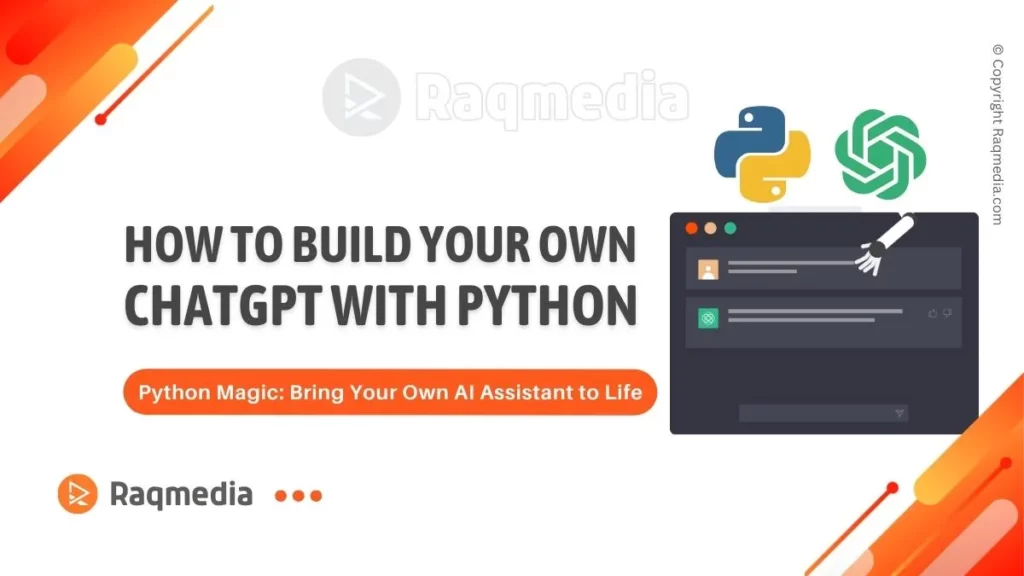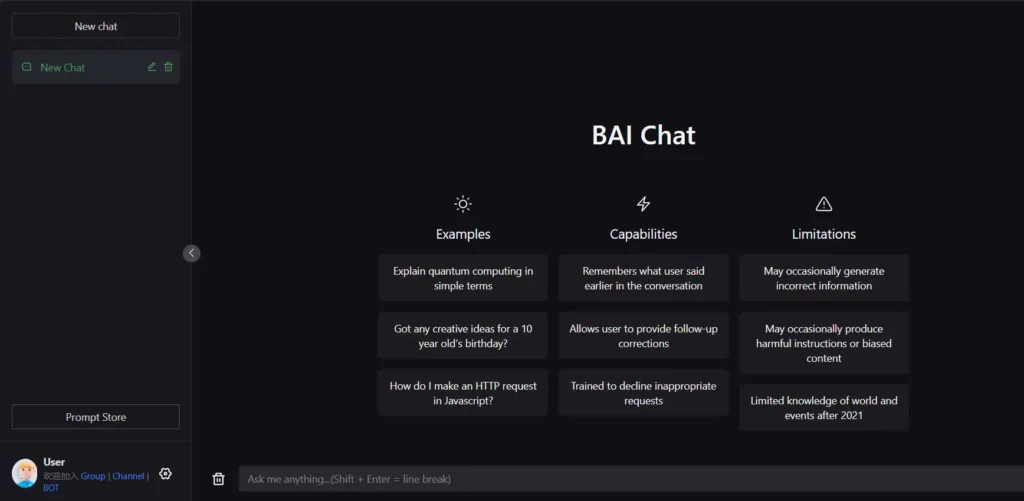Hey there, aspiring chatbot creators! Are you ready to dive into the world of artificial intelligence and create your own ChatGPT using Python? Well, get excited because I've got all the tips and tricks you need to bring your chatbot dreams to life. Whether you want a virtual assistant that can answer questions or a friendly companion for those lonely nights, this article will walk you through the step-by-step process of building your own ChatGPT. So grab your coding skills and let's get chatting!
The field of natural language processing has witnessed a paradigm shift with the advent of models like ChatGPT. This article serves as a comprehensive guide for individuals keen on creating their own ChatGPT using the power of Python.
Table of Contents
A Brief Overview of ChatGPT
ChatGPT, developed by OpenAI, is a language generation model that has demonstrated remarkable proficiency in generating human-like responses in a conversational context.
The Significance of Creating Your Own ChatGPT
Building a customized ChatGPT opens up a realm of possibilities, from tailoring the model to specific domains to ensuring ethical considerations are embedded in the design.
What to Expect in this Guide
This guide will walk you through the foundational concepts, the intricacies of model architecture, data preparation, training processes, ethical considerations, and integration possibilities, culminating in the creation of your personalized ChatGPT.
How to Create Your Own ChatGPT using Python
Understanding the Basics: Prerequisites

Necessary Python Skills
Before delving into the world of ChatGPT creation, it is imperative to possess a solid understanding of Python, particularly its data handling and manipulation capabilities.
Knowledge of Natural Language Processing (NLP)
An acquaintance with NLP fundamentals will serve as a valuable asset, enabling you to navigate through the complexities of language modeling.
Setting Up Your Environment
Installing Python Libraries
Create a robust environment by installing essential libraries like TensorFlow or PyTorch, depending on your preference. This ensures seamless compatibility with ChatGPT development.
Configuring Virtual Environments
Isolate your project environment using virtual environments to prevent conflicts with existing libraries and dependencies. This ensures a clean and controlled development space.
Building Blocks of a ChatGPT
Tokenization
Exploring Tokenization Techniques
Dive into the intricacies of tokenization, a critical step in processing natural language. Understand techniques such as word-based and subword-based tokenization for effective model input.
Tokenization Libraries in Python
Leverage Python libraries like spaCy or NLTK to implement robust tokenization, streamlining the conversion of textual data into manageable units for the model.
Language Modeling
Overview of Language Models
Grasp the fundamentals of language models, the backbone of ChatGPT. Understand how these models predict the next word in a sequence, forming the basis of conversational flow.
Choosing the Right Language Model for Your ChatGPT
Navigate through the landscape of pre-trained language models and select the one aligning with your project requirements. Consider factors like model size, training data, and language proficiency.
Data Preparation
Collecting and Preprocessing Data
Sourcing Conversational Data
Accumulate a diverse dataset of conversational data, ensuring it spans various topics and linguistic nuances. This diversity enhances the model's adaptability.
Cleaning and Structuring Data for Training
Prepare the dataset by cleaning irrelevant information, handling missing data, and structuring it to facilitate effective training. A well-prepared dataset lays the foundation for a robust ChatGPT.
Model Architecture
Selecting a Pre-trained Model
Comparing Available Models
Survey the landscape of pre-trained models, evaluating factors like model architecture, training duration, and performance metrics. Choose a model that aligns with your project goals.
Fine-tuning for ChatGPT
Customize the selected pre-trained model to suit the nuances of conversational AI. Fine-tune the model parameters for optimal performance in generating human-like responses.
Customizing Architecture
Adjusting Hyperparameters
Delve into the realm of hyperparameter tuning, tweaking values to optimize the model's learning process. Strike a balance between training speed and model accuracy.
Adding Personalization Layers
Infuse your ChatGPT with a touch of personalization by adding custom layers to the architecture. This step ensures the model aligns with the specific requirements of your application.
Training Your ChatGPT
Training Process Overview
Batch Training vs. Online Training
Understand the nuances of batch training and online training. Explore their implications on model convergence, training time, and adaptability to new data.
Monitoring Training Progress
Implement robust monitoring mechanisms to track the model's training progress. Visualize metrics like loss functions and validation scores to ensure the model is evolving effectively.
Fine-tuning for Specific Use Cases
Adapting to Domain-Specific Vocabulary
Tailor your ChatGPT to understand and generate content specific to your domain. Fine-tune the model on domain-specific data to enhance its contextual understanding.
Addressing Bias in Language Generation
Navigate the challenge of biased language generation. Implement strategies to mitigate bias, ensuring the model's responses are inclusive and unbiased.
Evaluation and Testing
Assessing Model Performance

Metrics for Evaluation
Define key metrics to assess your ChatGPT's performance. Metrics may include perplexity, fluency, and coherence, providing quantitative insights into the model's capabilities.
Human-in-the-Loop Testing
Incorporate human-in-the-loop testing to gauge the model's performance from a user's perspective. Human feedback adds a qualitative layer to the evaluation process.
Debugging and Optimization
Identifying Common Issues
Anticipate and address common issues during model deployment. From generation errors to context misinterpretation, a proactive approach to debugging is crucial.
Refining Model Output
Optimize the model's output by refining its response generation. Implement post-processing techniques to enhance coherence and relevance in the generated responses.
Integration with Applications
API Integration
Creating a RESTful API for Your ChatGPT
Expose your ChatGPT functionality through a RESTful API, enabling seamless integration with various applications. Define endpoints and handle API requests and responses effectively.
Managing API Requests and Responses
Implement robust mechanisms to manage API requests and responses. Handle concurrent requests, ensure low-latency responses, and maintain API stability.
Embedding in Web Applications
Adding ChatGPT to Websites
Enhance user experience by embedding ChatGPT into web applications. Utilize frameworks like Flask or Django for smooth integration, providing users with an interactive conversational interface.
Enhancing User Experience
Prioritize user experience by optimizing response times and providing clear communication. Implement features like context preservation to create a fluid and natural conversation flow.
Ethical Considerations
Addressing Bias and Fairness
Strategies for Mitigating Bias
Employ strategies to address and mitigate biases in language generation. From diverse training data to algorithmic interventions, ensure ethical considerations are embedded in your ChatGPT.
Responsible AI Practices
Adhere to responsible AI practices by transparently communicating the model's limitations and potential biases. Prioritize fairness and inclusivity throughout the development process.
Privacy Concerns
User Data Handling
Define robust protocols for handling user data. Prioritize user privacy by implementing secure data handling practices and complying with data protection regulations such as GDPR.
GDPR Compliance
Navigate the intricacies of GDPR compliance when dealing with user data. Implement features like data anonymization and consent mechanisms to align with privacy regulations.
Future Enhancements
Continuous Learning
Implementing Incremental Training
Future-proof your ChatGPT by implementing incremental training. Allow the model to adapt to evolving language trends and user interactions over time.
Adapting to Evolving Language Trends
Stay ahead of the curve by building mechanisms for your ChatGPT to adapt to evolving language trends. Monitor linguistic shifts and update the model accordingly.
Community Contributions
Open-source Collaboration
Foster a collaborative environment by open-sourcing your ChatGPT project. Invite contributions from the community, promoting knowledge sharing and continuous improvement.
Building a Supportive Community
Cultivate a supportive community around your ChatGPT project. Encourage discussions, share insights, and create a space for developers and users to exchange ideas and feedback.
Conclusion
The journey to create your own ChatGPT is both challenging and rewarding. From understanding the basics to fine-tuning and ethical considerations, each step contributes to the development of a powerful conversational AI.
As you embark on this endeavor, remember that creating a ChatGPT is a dynamic process. Embrace the continuous learning journey, stay informed about the latest advancements, and contribute to the ever-growing field of conversational AI. Your ChatGPT awaits its conversation with the world.
In conclusion, your ChatGPT is more than lines of code; it's a testament to your understanding of language, your expertise in machine learning, and your commitment to innovation. The doors to the future of AI are wide open, and you, as a creator, hold the key to unlocking its immense potential.
So, go forth with confidence, armed with the knowledge imparted in this guide. Your ChatGPT is not merely a program; it's a conversation starter, a facilitator of ideas, and, perhaps, a glimpse into the future of human-computer interaction.
May your endeavors in the world of AI be as dynamic and inventive as the technology you've just created. The possibilities are limitless, and you are now at the forefront of shaping the next generation of conversational AI. Happy coding!








